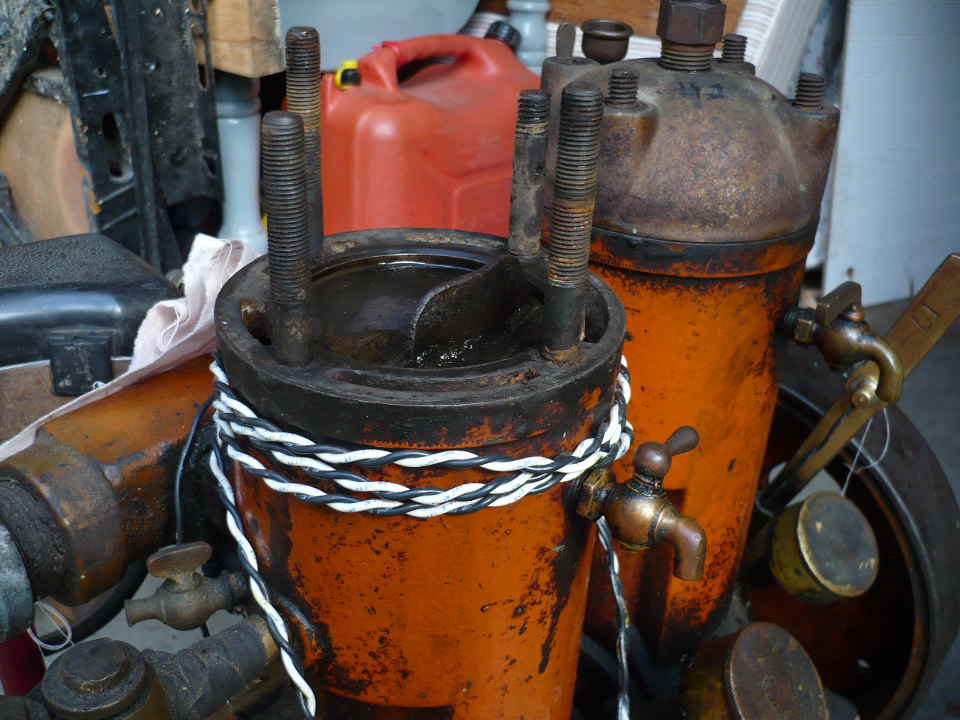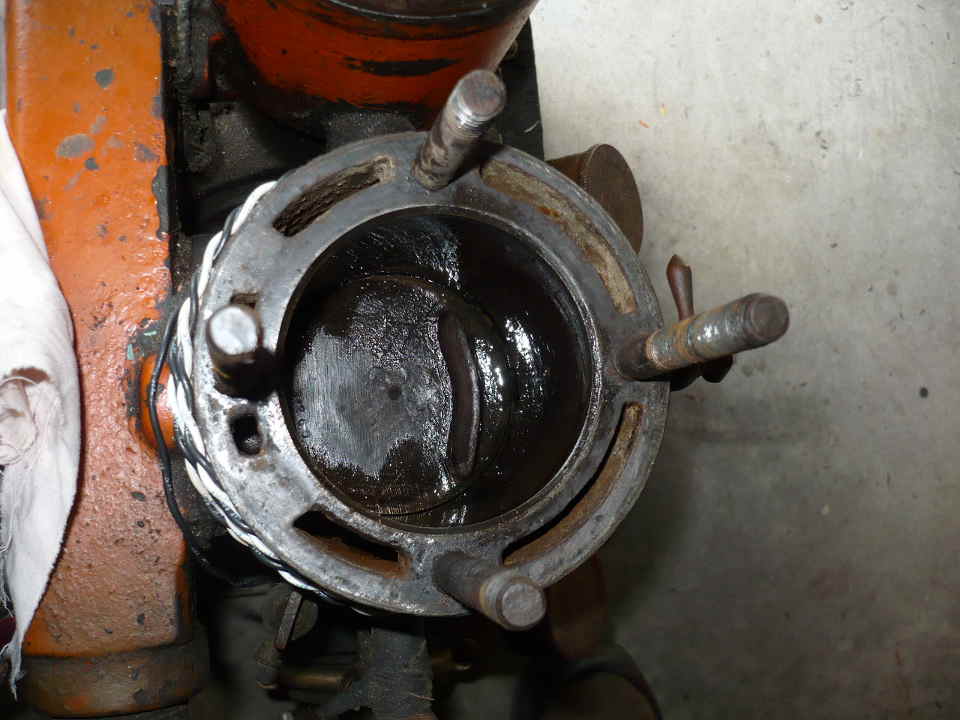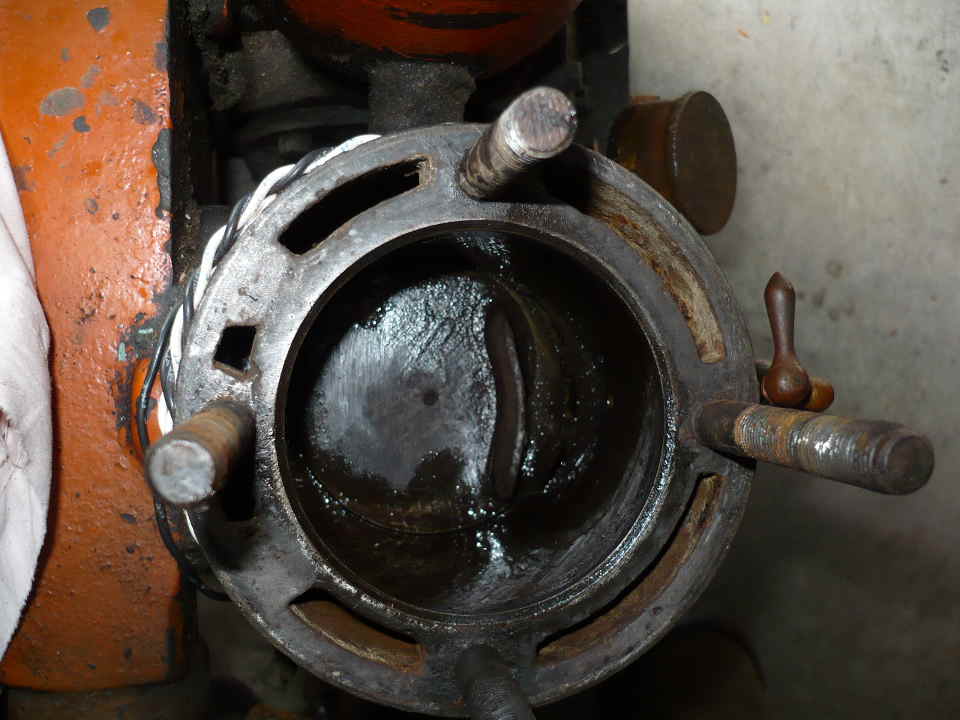| Author |
Message |
    
miro
Senior Member
Username: miro
Post Number: 493
Registered: 11-2001

| | Posted on Thursday, October 07, 2010 - 09:15 pm: | 




|
Since I already had the heads off the St Lawrence I decided to see how much "pop" there was coming out of the crankcase when the piston cleared the intake port.
I was quite surprised to see how powerful it was. And since we normally don't see this, I made a video as well as taking some pictures.
It seems to me that the mixture coming out of the intake port slams into the deflector and might even help push the spent exhaust gases out the exhaust port.
The pictures show the deflector and ( not so well) the piston at the bottom of its stroke.
miro

You have to look closely to see the port - couldn't quite get the lighting on the picture any better

 |
    
miro
Senior Member
Username: miro
Post Number: 494
Registered: 11-2001

| | Posted on Thursday, October 07, 2010 - 09:17 pm: | 




|
Here's the link to the video
http://www.youtube.com/watch?v=26ZqocIaS5w
miro
ps It's sort of a good report card on the sealing of the crankcase. |
    
johnny
Senior Member
Username: johnny
Post Number: 346
Registered: 03-2006

| | Posted on Friday, October 08, 2010 - 07:33 am: | 




|
Miro,
Thanks for sharing the pic's and video, very interesting.
This makes me think about a problem that happens to the two cycle engines sometimes especially the Detroit marine engines and stationary farm engines with the low pressure fuel injection system.
Problem: Engine will not start no matter how many times you try. open the cockpet on the crankcase, fuel & some oil drain out. Close cockpit, engine starts first or second try.
When the engine had fuel & oil in the crankcase why would it not start because it was flooded? or because of the increase or decrease in crankcase pressure or vacuum due to the fuel & oil being in the crankcase? No matter how many times you turn the flywheel over the engine will not start and this small amount of fuel & oil always stays at the bottom of the crankcase. Drain it out and the engine starts.
|
    
ernie
Senior Member
Username: ernie
Post Number: 1275
Registered: 01-2002

| | Posted on Friday, October 08, 2010 - 11:01 am: | 




|
Most likely flooded when the crankcase needs to be drained. Some engines are fussy on this and some are not. I almost never drain the crankcase of the Gray "U" in my boat and it always starts easily.
Also we know thanks to Miro's vids that this is a good running engine. However a good pop out of the crankcase through the transfer port isn't an indication of how well it will run. (compression)
1 the rings are seating on the other side of the ring groove so this isn't a good check to start verifying compression.
2 crankcase compression is only a couple of pounds.
However it is an indication that the engine can breathe. Meaning that the intake check valve or piston skirt is closing the inlet port.
Also if you have not just twisted down on the main bearing grease cups you can spray some soapy water around the main bearings at the crank shaft and see how good that seal is. |
    
gregoryan
Senior Member
Username: gregoryan
Post Number: 70
Registered: 09-2004

| | Posted on Tuesday, October 19, 2010 - 12:49 am: | 




|
Great pics and vid!
Despite two strokes being 'simple' they are still ingenious in their aspiration. Unlike my engines with a one-piece head-cylinder, it is great to see/hear the scavenge stroke. Yes; the new charge coming out of the transfer/ inlet port sure does help displace the remaining exhaust gas after its initial blow-down [as the ex port opens just before the transfer port] The deflector helps stop the new charge from going straight out the ex port, and ideally directs the charge to replace all the burnt gas around the combustion chamber with new. However; at low throttle there is less than one swept-volume (of the piston's underside) of new gas to displace the old, so there will be some exhaust contamination in the next combustion. This is why the 2 strokes misfire without load - as there is not enough scavenge draft with the throttle closed.
In the pic, the piston crown's deflector's thinness suggests that it'd nearly run red-hot?, risking pre- ignition perhaps?? or does it take a faster running engine to cause this heat? |
    
senojn
Senior Member
Username: senojn
Post Number: 70
Registered: 08-2006
| | Posted on Wednesday, October 20, 2010 - 03:38 am: | 




|
Greg ,
You are a gem .
Must have you visit us.
I can arrange it all including transport .
Cheers ,
Neil |


